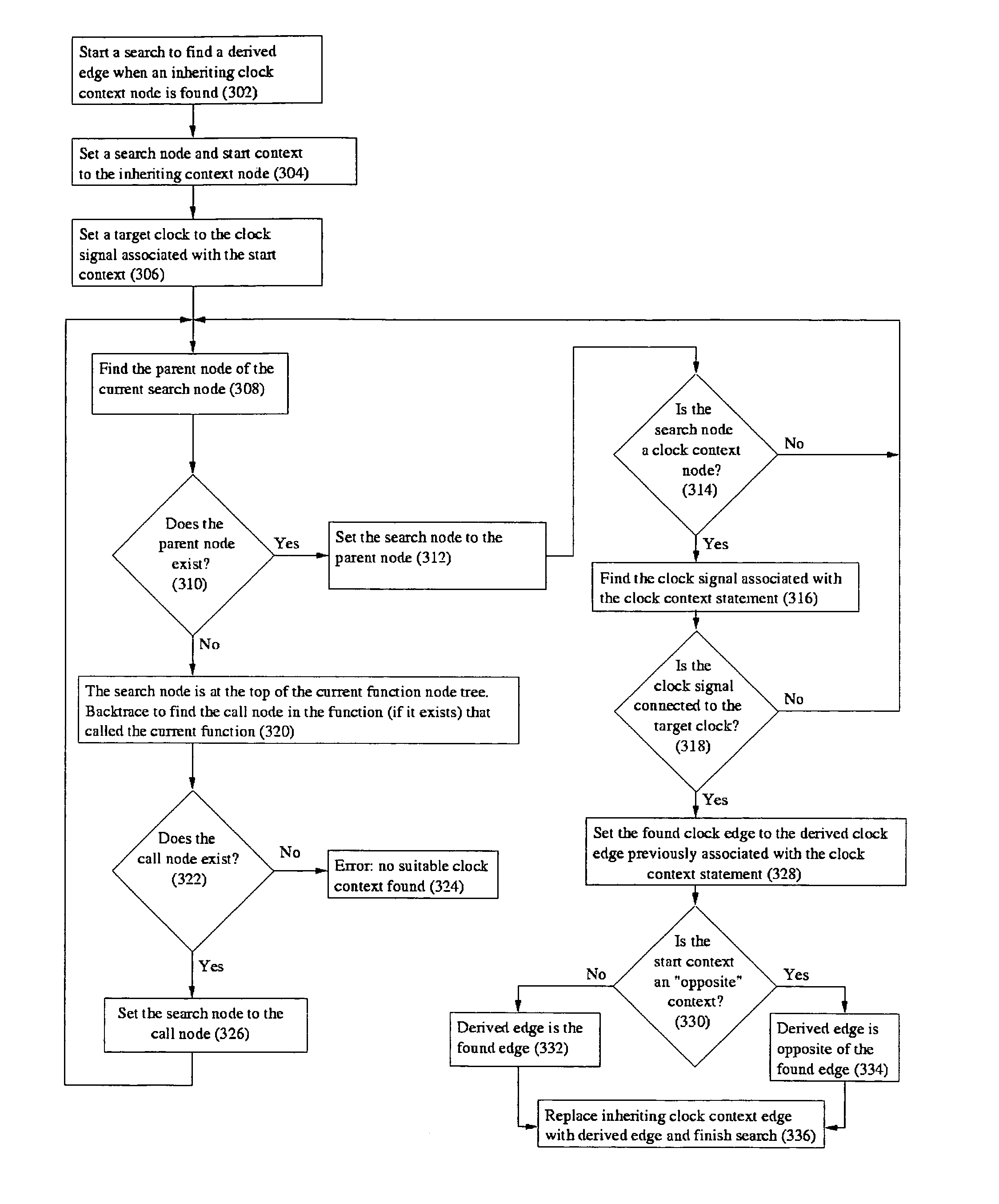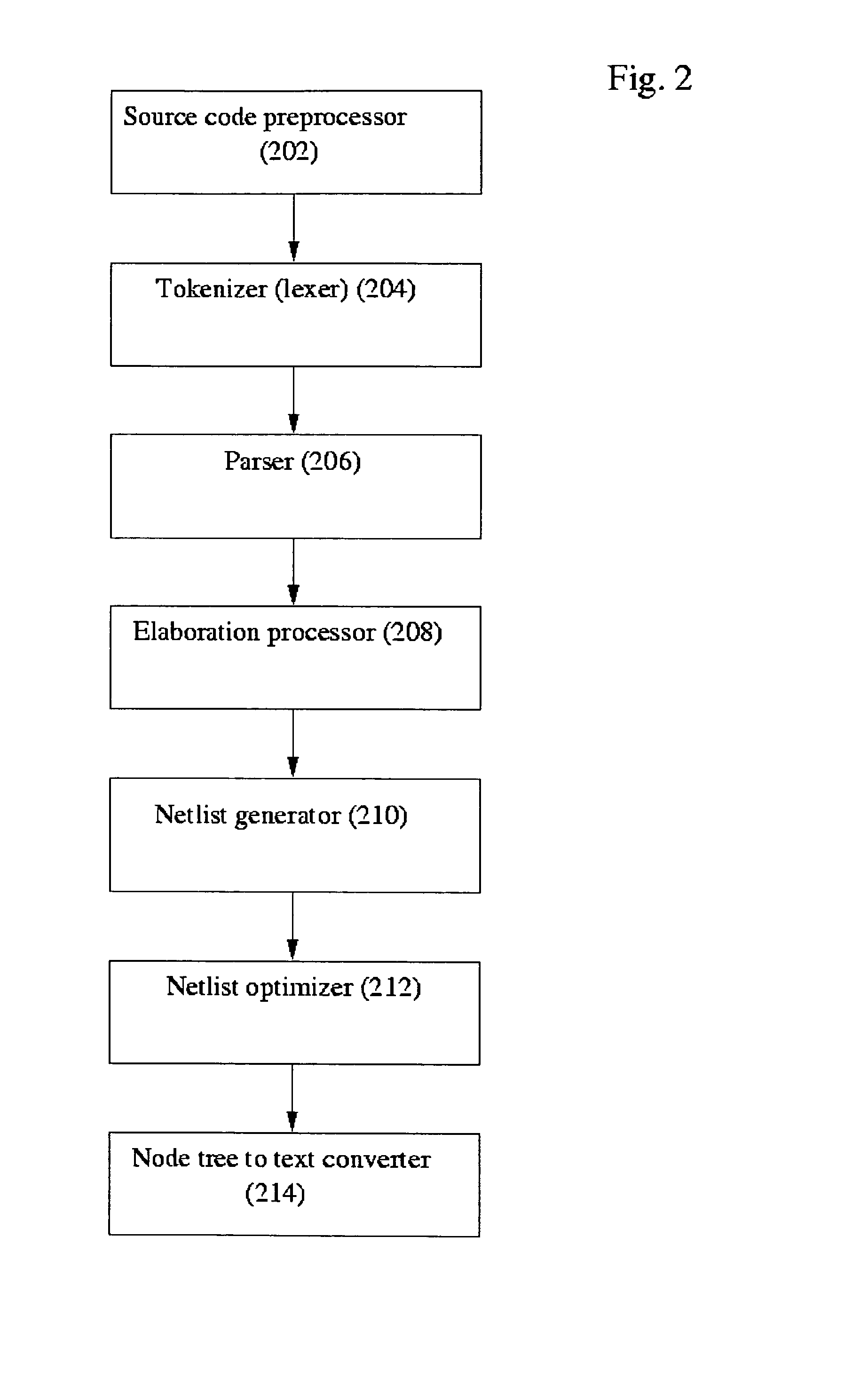Search algorithm for inheriting clock contexts in hardware description language translation tools
a hardware description and search algorithm technology, applied in the field of circuit design languages and tools, can solve the problems of difficult circuit designers to check for errors, verilog cannot accept clock context edge specifications using absolute clock edges, and source code is much more verbose, so as to improve source code reuse
- Summary
- Abstract
- Description
- Claims
- Application Information
AI Technical Summary
Problems solved by technology
Method used
Image
Examples
Embodiment Construction
[0069]In the following description, a preferred embodiment of the search algorithm of the present invention is often described with regard to preferred process steps, data structures, and related techniques. However, those skilled in the computer arts would recognize, after obtaining an understanding of the algorithm, that its embodiment is most easily and ideally implemented using a general purpose computer operating under program control. Modification of the computer to implement the process steps and data structures described herein would not require either additional invention or undue experimentation.
[0070]The search algorithm has been implemented as software to run on a hardware computing platform. The search algorithm has facilitated the design of more flexible and reusable software library components for use in digital circuit designs.
[0071]The objects, advantages and other novel features are apparent from the following detailed description when read in conjunction with the ...
PUM
 Login to View More
Login to View More Abstract
Description
Claims
Application Information
 Login to View More
Login to View More - R&D
- Intellectual Property
- Life Sciences
- Materials
- Tech Scout
- Unparalleled Data Quality
- Higher Quality Content
- 60% Fewer Hallucinations
Browse by: Latest US Patents, China's latest patents, Technical Efficacy Thesaurus, Application Domain, Technology Topic, Popular Technical Reports.
© 2025 PatSnap. All rights reserved.Legal|Privacy policy|Modern Slavery Act Transparency Statement|Sitemap|About US| Contact US: help@patsnap.com



